Applications
Single color LED strip lights produce optical radiation that appears to have only one color (in comparison to polychromatic). Flexible LED strip lights built with LEDs of a monochromatic color such as red, green, blue, cyan, royal blue, deep red, red-orange or amber allow lighting designers and DIY hobbyists to implement inspiring designs that are dramatic expressions of color and creativity. Single color LED strip lights push the boundaries of lighting performance and the spectrum of applications. These flexible, ultra-thin linear lights accommodate a variety of accent and decorative lighting applications which include architectural decorative lighting, Christmas and holiday lighting, atmosphere lighting, back lighting, cove lighting, vehicle and boat accentuation, stage lighting, signage lighting, etc.
Fabrication
A single color LED strip light is a linear array of SMD LEDs mounted on a flexible strip of printed circuit board (FPC). The linear LED array consists of a number of LED strings wired in parallel. Each LED string may comprise one or more LEDs. A 12V LED strip is often configured to include 3 LEDs in a string, and a 24V LED strip is typically configured with 6 LEDs in series per string. This wiring configuration allows flexible strip lights to be cut and reconnected every string for customized length. The LEDs are populated on an FPC that is typically made from a polyimide (PI) film laminated with rolled and annealed (RA) copper foils. Polyimide is commonly used as the FPC substrate material due to its ability to support high-temperature processes such as soldering and wire bonding. The bend radius is largely a function of the properties of the copper foil. RA copper offers greater strength and toughness than electro-deposited (ED) copper for dynamic flex applications. The circuit paths made from RA copper should be adequately sized to the power load as well as the effects of voltage drops caused by the resistance in long power connections. The copper foil on a flexible PCB ribbon also serves a heat sink, and therefore having a thicker layer will allow more efficient dissipation of heat generated by the LEDs.
Drive current regulation
From a design perspective, maintaining consistent light output across the length of an LED strip light is a major challenge. While the circuit path must be dimensioned to reduce the impact of voltage drop, it is absolutely crucial to regulate power provided to the LED light source to a particular value so that there’s no significant visible differences in brightness all along the tape length. LED strip lights either incorporate resistors or use active current regulation to provide individual current control of each LED or LED string. Resistors are commonly used in low-cost products. For a consistent light output across the LED tape, these current limiting devices must be selected to match the forward voltage of the LEDs and carry a tight tolerance rating. Active current regulation operated by dedicated constant current integrated circuits (ICs) provides more accurate drive current control although they cost a bit more. The constant voltage power supply that is used to operate the LED strip light or runs of lights in whatever wiring configurations should provide additional margin in wattage. This allows an adequate amount of voltage to reach the LEDs that are located farther from the power supply.
Chip technology
The SMD LEDs used on single color LED strip lights can be divided into two groups. Green, cyan, and blue LEDs are indium gallium nitride (InGaN) devices whereas red, deep red, red-orange, and amber LEDs are built with aluminum indium gallium phosphide (AlInGaP) materials. AlInGaP LEDs not only have a lower quantum efficiency than InGaN LEDs but also suffer from a greater thermal efficiency droop. To ensure consistency in color across the strip, colored AlInGaP and InGaN LEDs will need to be binned within a tight set of bounds based on the dominant wavelength or peak wavelength. LEDs also vary in forward voltage, therefore tight voltage binning is equally as important as binning of color points.

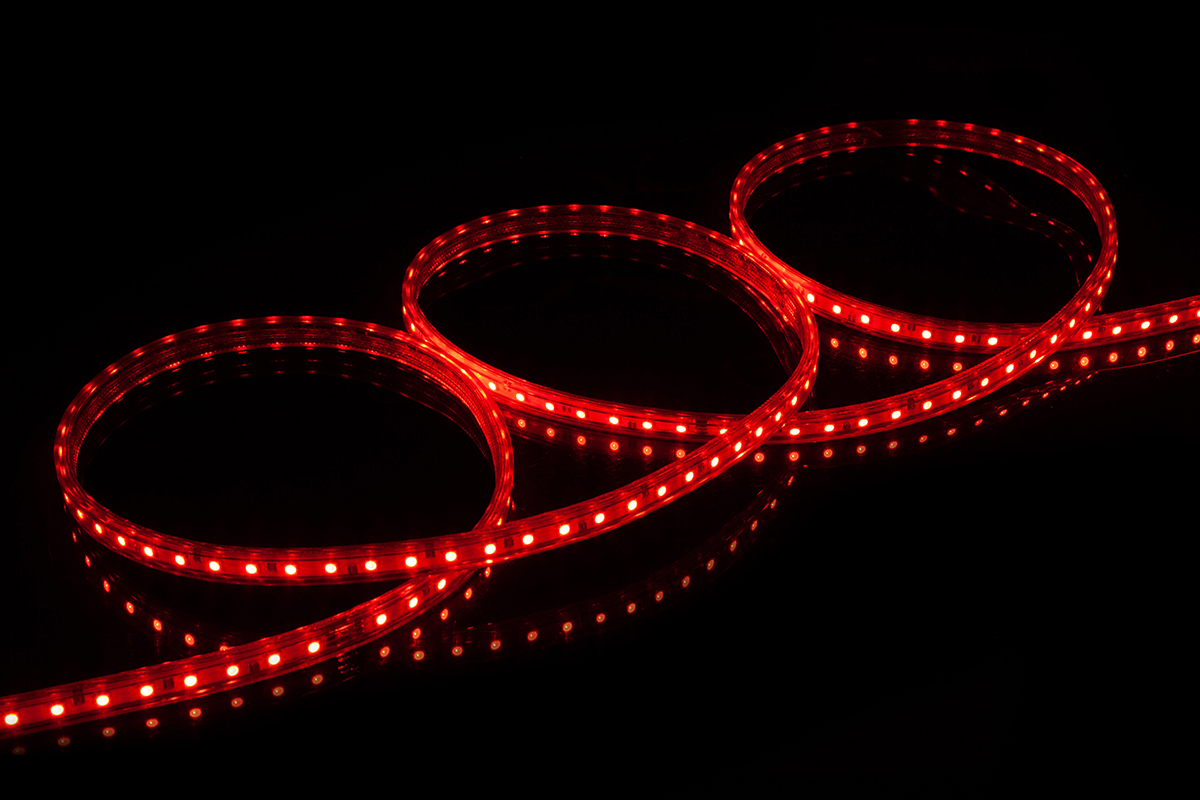




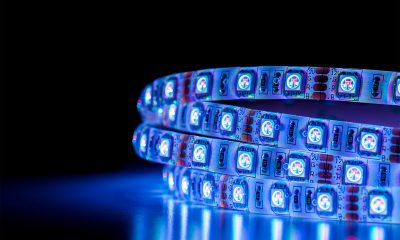
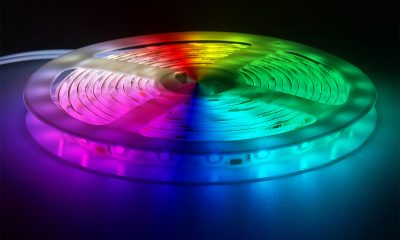

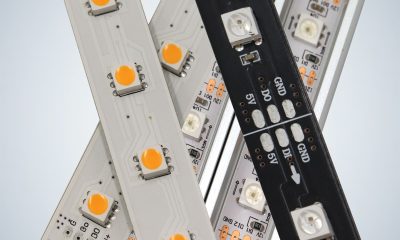
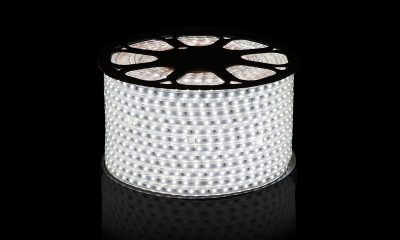

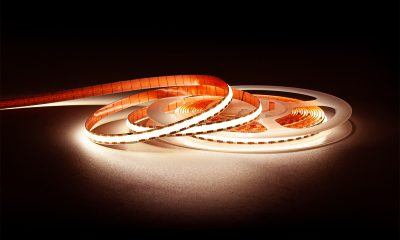
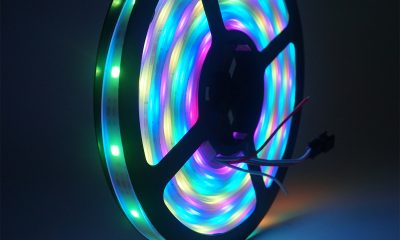





Loading...